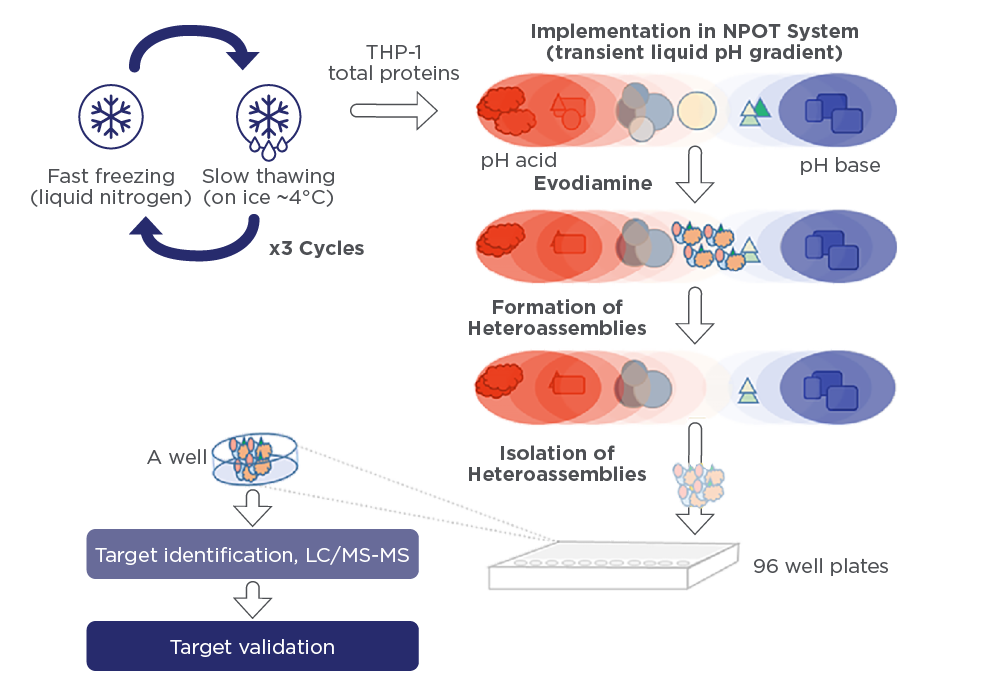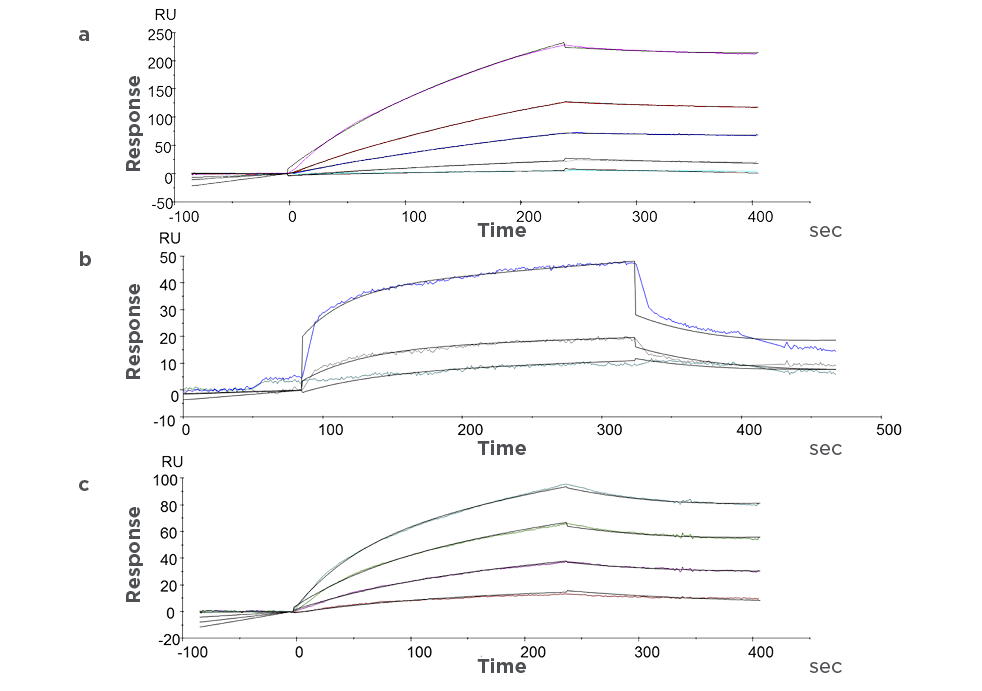- Services
Services
Inoviem provides a full range of services from drug discovery to clinical development by leveraging its platforms and direct access to human pathological specimens.
All the platforms and services are label-free with no modification of the original molecules.Unravel disease relevant Mode of Action (MoA) of your molecule directly on human tissues.
Identify and validate targets in your study model or in Human.
Thanks to our ex-vivo pharmacology expertise we identify the best disease and patients subgroups.
Using patients’ samples and PIMS® technology, we identify those individuals who can benefit best from your compound as soon as the early stage of preclinical studies.
Compounds of interest can be profiled for their drugability based on their mode of action and efficacy.
Translational pharmacology empowers your ability to identify biomarkers and advance clinical developments.
Advanced SPR and proteomics drive precise analysis of biomolecular interactions and protein landscapes.
Meticulous collection and biobanking of human samples fuel robust, translational research.
- Platforms
Platforms
Inoviem provides breakthrough protein technologies for each phase of the drug development process.
One of the major advantages of our label-free technologies used under physiological conditions and in human tissue – NPOT® and PIMS® – is that the test compound retains its original structure, as well as the exact same molecular structure that would be used in therapyPIMS®
Designed to study molecular interactions and predict therapeutic responses in biomedical research
Biomarkers discovery
Methodology for the proteomic profiling of human individuals in the context of translational evaluation of biomarkers and clinical development of new drug candidates.
- Knowledge centre
- About us
About us
Inoviem Scientific is a Bioanalytical R&D company established in 2011 in Strasburg – France.

Our mission
Our mission is clear: to get the right treatment to the right patients within the right therapeutic window.
- Contact us
Increased cholesterol efflux (ChE) is regarded to have an anti-atherosclerotic effect by exporting cholesterol from macrophages. Identification and characterization of molecules that stimulate ChE are of pharmacological relevance. Here we characterize the dietary supplement evodiamine, an indoloquinazoline alkaloid from the fruits of Evodia rutaecarpa (Juss.) Benth., as a macrophage ChE inducer and identify its binding target protein using nematic protein organisation technique (NPOT). NPOT interactome analysis and surface plasmon resonance (SPR) experiments revealed that evodiamine stabilizes the ABCA1 protein by direct binding. Evodiamine dose-dependently (from 1 to 20 µM) increases ChE from THP-1-derived human macrophages. Testing of key membrane transporters contributing to ChE revealed that ABCA1 was increased in response to evodiamine treatment (10 µM), while the protein level of ABCG1 and SR-B1 remain unaffected. Evodiamine (10 µM) did not influence ABCA1 mRNA level but significantly inhibited the degradation of ABCA1 as evident by an increased half-life of the protein in the presence of cycloheximide, an inhibitor of de novo protein synthesis. This bioactivity makes evodiamine a good candidate to be further explored for therapeutic or preventive application in the context of atherosclerosis.


Figure 1│Nematic protein organisation technique (NPOT) for interactome analysis of evodiamine.
(a) The NPOT was performed under laminar flow and sterile condition at 4°C. 1 µM of evodiamine was mixed separately with 1 µg of total THP-1 extract and then subjected to NPOT heteroassemblies isolation. Experiments were performed three times independently. After the NPOT isolation step, the heteroassemblies were allowed to form overnight, and captured in 96 wells microtiter plates in the form of a droplet. Finally, the heteroassemblies are isolated and identified by mass spectroscopy directly in liquid.
(b) Capture of heteroassemblies in a droplet using 96 well microtiter plate. The floating heteroassemblies are circled with dotted line in three independent experiments. Non interacting proteins are precipitated to the bottom of the well in experiment 1 and 2. The latter is visible in the third experiment on the wall of the well as pointed with the red arrow. The latter is normally due to the vibration induced by incubator ventilation. In the absence of evodiamine no heteroassambly is formed (DMSO), as seen in the last picture on the right.

Figure 2 │Interactions between polyclonal anti-ABCA1 antibody, evodiamine and ABCA1 protein.
(a) Interaction of polyclonal anti-ABCA1 antibody with immobilized ABCA1 on CM5 sensor chip as assessed by Biacore 3000. The interaction affinity is calculated with association constant (KA) equal to 1.18e6M and dissociation constant (KD) equal to 4.57e-7M (antibody concentrations from bottom to top are ;4.25e-8, 8.5e-8,1.75e-7, 3.5e-7 and 7e-7M).
(b) Interaction affinity between evodiamine and ABCA1. Evodiamine interacts with an association constant (KA) equal to 1,23e6M and a dissociation constant (KD) equal to 8,1e-7M (evodiamine concentrations from bottom to top are; 2.5e-7, 5e-7 and 1e-6M). There is a bulk effect with Evodiamine at 1e-6M. This explains the higher signal (RU) in regard to the two lower concentrations.
(c) Interaction of retinal dehydogenase-1 (ALDHA1) with immobilized ABCA1. The two proteins interact with a KA equal to 1.25e6M and KD of 8.03e-7M (ALDHA1 concentrations from bottom to top are; 6e-8, 1.25e-7, 2.5e-7, 5e-7M and 1e-6M).

Figure 3 │ Effect of evodiamine (a) on ChE from THP-1 macrophages.
Differentiated THP-1 cells were loaded with [3H]-cholesterol together with the indicated treatments for 24 h. On the next day, the cells were washed twice with PBS and incubated with the same compounds [solvent vehicle control (Veh; ≤ 0.1% DMSO), evodiamine (1-20 μM), and the PPARγ agonist pioglitazone (10 μM) as positive control] with or without 10 µg/mL apo A1 (b) or 1% human plasma with 10 μM evodiamine (c) dissolved in serum-free medium for 6 h. Extracellular as well as intracellular radioactivity were quantified with scintillation counter. Differentiated THP-1-derived macrophages were treated with solvent vehicle control (Veh; ≤ 0.1% DMSO), evodiamine (10 μM), and the PPARγ agonist pioglitazone (10 μM) as positive control. After 24 h incubation, the cells were lysed and 20 μg protein was resolved via SDS-PAGE. Immunodetection was performed with antibodies against the indicated proteins, ABCA1 (d), ABCG1 (e), and SR-B1 (f), and visualized by chemiluminescence detection. All experiments were performed at least three times and data are presented as means ± S.D. vs. solvent vehicle control, *p <0.05, **p <0.01, ***p <0.001, n.s. no significance (ANOVA / Bonferroni).

Figure 4 │Effect of evodiamine on ABCA1 transcription and the degradation rate of ABCA1 protein.
(a) Differentiated THP-1 macrophages were incubated with 10 μM evodiamine or 10 μM pioglitazone as positive control for 24 h. Total RNA was extracted and ABCA1 mRNA expression levels were quantified by qRT-PCR.
(b) 293T cells were transfected with a luciferase reporter construct driven by the human ABCA1 promoter as described in the Materials and Methods section. After transfection, cells were treated with 10 μM Evodiamine or 1 μM T0901317 as positive control for 24 h.
(c) Differentiated THP-1 macrophages were incubated for 24 h with (black circle) or without (Veh; white circle) evodiamine (10 μM) and lysed after addition of cycloheximide (CHX; 140 μM) at different time points (0, 10, 20, 40 min). Western blot analysis shows the decline of ABCA1 protein level with cycloheximide in the presence and absence of evodiamine. All data are means ± S.D. (n=3) vs. solvent vehicle control (DMSO), *p <0.05, **p <0.01, n.s. no significance (ANOVA / Bonferroni).

Figure 5 │Time dependent effect of evodiamine on ABCA1 protein expression.
(a) Differentiated THP-1 macrophages were incubated with solvent vehicle control (DMSO), 50 μg/mL digitonin, and indicated concentrations of evodiamine. After 24 h, the increased fluorescent signal was detected as a measure for cell viability.
(b) Differentiated THP-1 macrophages were incubated up to 24 h with (black circles) or without (Veh; white circles) evodiamine (10 μM). Cells were lysed at different time points (0, 3, 6, 15, 24 h) and 20 μg protein was resolved via SDS-PAGE. Immunodetection was performed with the antibody against ABCA1. All data are means ± S.D. (n=3) vs. solvent vehicle control (DMSO) at certain time point, *p <0.05, ***p <0.001, n.s. no significance (ANOVA / Bonferroni).
Conclusion
NPOT was able to identify evodiamine protein target study model. We report for the first time that evodiamine increases ChE from human THP-1-derived macrophages, and show that its mechanism of action involves ABCA1 upregulation by extending its protein half-life associated with a direct binding of evodiamine to ABCA1. This mechanism of action may contribute to the previously described anti-atherosclerotic effect of evodiamine, and may lead to a better understanding of the bioeffects induced by dietary supplements containing this natural product.
References
- Grundy, S.M. Absorption and Metabolism of Dietary-Cholesterol. Annual Review of Nutrition 3, 71-96 (1983).
- Cuchel, M. & Rader, D.J. Macrophage reverse cholesterol transport: key to the regression of atherosclerosis? Circulation 113, 2548-55 (2006).
- Duffy, D. & Rader, D.J. Emerging therapies targeting high-density lipoprotein metabolism and reverse cholesterol transport. Circulation 113, 1140-50 (2006).
- Van Gaal, L.F., Mertens, I.L. & De Block, C.E. Mechanisms linking obesity with cardiovascular disease. Nature 444, 875-80 (2006).
- Phillips, M.C. Molecular mechanisms of cellular cholesterol efflux. The Journal of biological chemistry 289, 24020-9 (2014).
- Kim, H.J., Park, J.M., Kim, J.A. & Ko, B.P. Effect of herbal Ephedra sinica and Evodia rutaecarpa on body composition
- Schwarz, N.A. et al. Capsaicin and evodiamine ingestion does not augment energy expenditure and fat oxidation at rest or after moderately-intense exercise. Nutrition research 33, 1034-42 (2013).
- Gee, M.B. & Smith, P.E. Kirkwood-Buff theory of molecular and protein association, aggregation, and cellular crowding. Journal of Chemical Physics 131(2009).
- Shimizu, S. & Boon, C.L. The Kirkwood-Buff theory and the effect of cosolvents on biochemical reactions. Journal of Chemical Physics 121, 9147-9155 (2004).
- Buechler, C., Boettcher, A., Bared, S.M., Probst, M.C.O. & Schmitz, G. The carboxyterminus of the ATP-binding cassette transporter A1 interacts with a beta 2-syntrophin/utrophin complex. Biochemical and Biophysical Research Communications 293, 759-765 (2002).
- Yu, H., Jin, H., Gong, W., Wang, Z. & Liang, H. Pharmacological actions of multi-target-directed evodiamine. Molecules 18, 1826-43 (2013).
Table 1│Nutritional supplements containing evodiamine.
